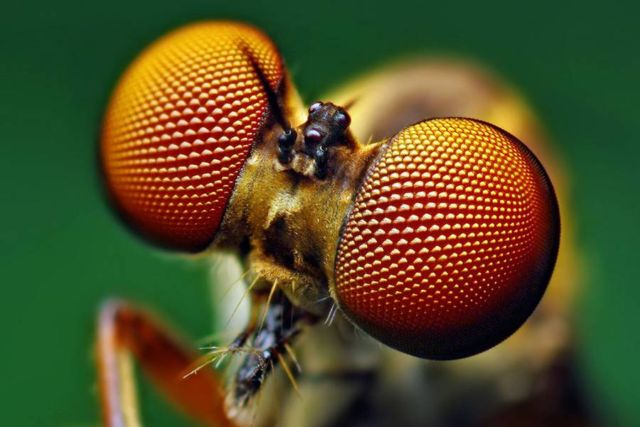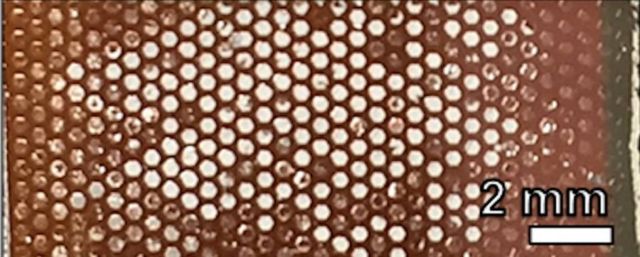A new solar cell inspired by the compound eyes of insects could help scientists overcome a major roadblock to their development.
In a new study, scientists from Stanford used the insect-inspired design to protect a fragile photovoltaic material called perovskite, from deteriorating when exposed to heat, moisture or mechanical stress.
Above, the compound eye of a fly inspired Stanford researchers to create a compound solar cell consisting of perovskite microcells encapsulated in a hexagon-shaped scaffold. Image credit Thomas Shahan/Creative Commons
Reinhold Dauskardt, a professor of materials science and engineering and senior author of the study, said:
“Perovskites are promising, low-cost materials that convert sunlight to electricity as efficiently as conventional solar cells made of silicon. The problem is that perovskites are extremely unstable and mechanically fragile. They would barely survive the manufacturing process, let alone be durable long term in the environment.”
Most solar devices, like rooftop panels, use a flat, or planar, design. But that approach doesn’t work well with perovskite solar cells.
Graduate student Nicholas Rolston, a co-lead author of the E&ES study, explains:
“Perovskites are the most fragile materials ever tested in the history of our lab. This fragility is related to the brittle, salt-like crystal structure of perovskite, which has mechanical properties similar to table salt.”
Scaffolds in a compound solar cell filled with perovskite after fracture testing. Image credit Dauskardt Lab/Stanford University
The results are published in the journal Energy & Environmental Science (E&ES).
source Stanford







Leave A Comment